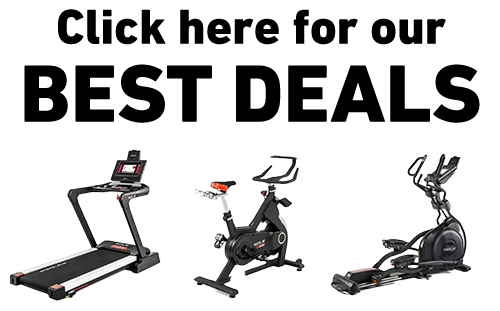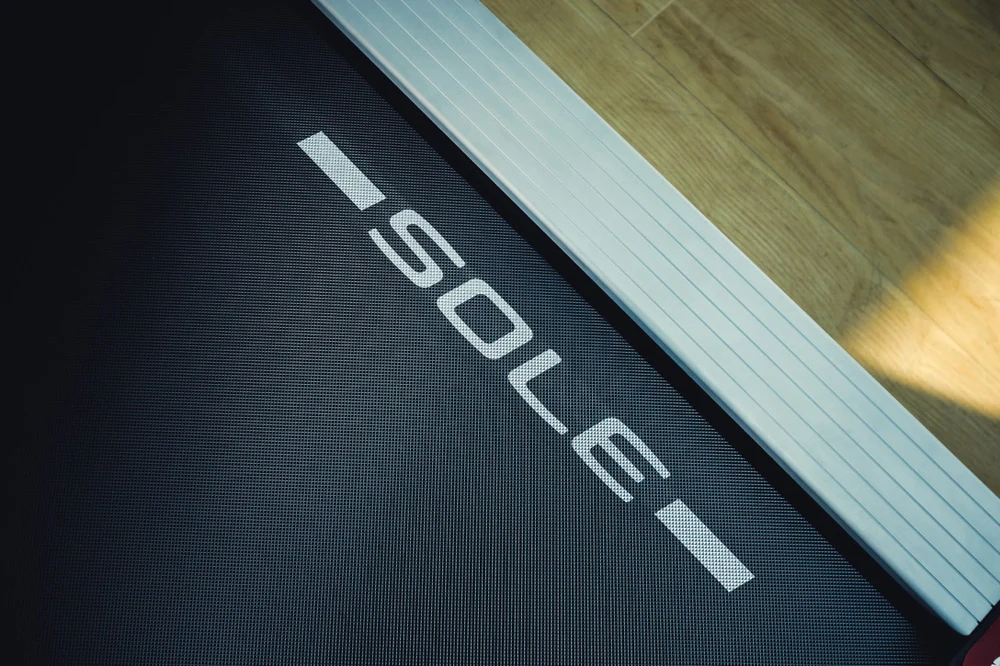Key Takeaways
- Adjusting your SOLE treadmill belt ensures optimal performance and longevity.
- Common issues include misalignment and improper tension.
- Tools needed are an Allen wrench and a 13 mm wrench.
- Proper maintenance includes regular lubrication and cleaning to remove dust and debris.
|
At SOLE Fitness, we're proud to offer the best treadmills for your home or gym. These machines are crafted to meet the highest standards of quality and performance, ensuring they are ideal for anyone - from fitness novices to seasoned athletes. Featured Product SOLE Treadmills: Starting at $1,199.99, SOLE treadmills excel in ergonomic design, durability, and value. Equipped with advanced cushioning to minimize joint impact, powerful, quiet motors, and wide running surfaces, they suit any fitness level. |
Why Adjust Your SOLE Treadmill Belt?
- Preventing Slips: A loose belt can cause you to slip, leading to potential injuries.
- Reducing Wear: Proper tension prevents excessive wear on the motor and other components.
- Improving Performance: A well-aligned belt ensures smooth operation, making your workouts more enjoyable.

Common Treadmill Belt Issues
- The belt is tracking too far to one side.
- The belt feels too loose or too tight when you press down on it.
- You hear unusual noises during operation.
- The belt slips while you're running.
Benefits of Proper Adjustment
- The machine operates more quietly, making your workouts more pleasant.
- A well-aligned belt reduces wear and tear on both the belt and the motor, extending the life of your treadmill.
- You’ll get a safer workout environment by preventing sudden slips or jerks.
- A properly adjusted belt ensures that your workouts are more effective - you can maintain a steady pace without interruptions.
Tools You Will Need
Allen Wrench
An Allen wrench is usually provided with your treadmill - and you can use it to make precise changes so that the belt is neither too tight nor too loose.

13 mm Wrench
A 13 mm wrench is often required for more significant adjustments, such as tightening or loosening the bolts that hold the belt in place.

Step-by-Step Guide
Turn Off and Unplug
Before you begin any adjustments, make sure to turn off your treadmill and unplug it from the power source.
Locate Adjustment Bolts
Next, locate the adjustment bolts on your treadmill - these are usually found at the rear end of the machine. The bolts are responsible for controlling the tension and alignment of the belt.

Adjust the Tension
If the belt is too loose, it can slip while you're running - but if the belt is too tight, it can cause excessive wear on the motor and the belt itself.
To adjust the tension, follow these steps:
- Using the Allen wrench, turn the bolts clockwise to tighten the belt. Turn them counterclockwise to loosen it.
- Make small adjustments, about a quarter turn at a time, to avoid over-tightening or over-loosening the belt.
After each adjustment, press down on the center of the belt. It should not sag more than 1-2 inches. If it does, continue adjusting until the tension is just right.

Align the Belt
Proper alignment of the treadmill belt ensures that it runs straight and doesn't rub against the sides. Misalignment can cause uneven wear and tear, leading to costly repairs.
To align the belt:
- Turn on the treadmill and set it to a low speed, around 1-2 mph.
- Observe the belt's movement. If it is tracking to the right, turn the right adjustment bolt clockwise and the left bolt counterclockwise.
- If the belt is tracking to the left, turn the left adjustment bolt clockwise and the right bolt counterclockwise.
- Make small adjustments and observe the belt's movement after each change.
Continue this process until the belt runs straight in the center of the deck.

Test the Belt
Plug the treadmill back in and turn it on at a low speed, around 1-2 mph. Observe the belt's movement to ensure it stays centered and doesn't rub against the sides. If necessary, make further adjustments until the belt runs straight and smooth.
Repeat these steps periodically - regular checks and adjustments can prevent issues from escalating and ensure a safer workout experience.
Maintenance Tips
Regular Lubrication
Lubricating the treadmill belt reduces friction and wear, extending the life of both the belt and the motor. Most SOLE treadmills come with a bottle of lubricant, and it's recommended to apply it every 90 hours of use or every 3 months.
To lubricate the belt:
- Turn off and unplug the treadmill.
- Dust off the belt using a lint-free cloth.
- Lift the belt slightly and apply the lubricant to the deck underneath.
- Spread the lubricant evenly across the deck.
- Plug in and turn on the treadmill, then run it at a low speed for a few minutes to distribute the lubricant.
Belt Cleaning
Dust and debris can accumulate under the belt, causing friction and wear. Clean the belt regularly to prevent these issues.
To clean the belt:
- Turn off and unplug the treadmill.
- Use a soft, damp cloth, or paper towel to wipe down the belt and the deck.
- Remove any debris or dust that has accumulated under the belt.
- Vacuum under and around your treadmill to remove dust.
- Allow the belt to dry completely before using the treadmill again.
Frequently Asked Questions (FAQ)
How often should I check the belt alignment?
It's a good idea to check the belt alignment every month or after every 20 hours of use. Regular checks help you catch any misalignment early and prevent more significant issues.
What if the belt keeps slipping?
If the belt keeps slipping, it might be too loose. Follow the steps to tighten the belt, making small adjustments to avoid over-tightening. If the problem persists, check for wear and tear on the belt or consult the user manual for further troubleshooting.
Can I adjust the belt while the treadmill is on?
No, always turn off and unplug the treadmill before making any adjustments. This ensures your safety and prevents any accidental starts while you're working on the belt.
Do different SOLE models require different tools?
Most SOLE treadmill models use similar tools for belt adjustment, typically an Allen wrench and a 13 mm wrench. However, always refer to your specific model's user manual to confirm the required tools and any unique adjustment procedures.
How do I know if the belt is too tight or too loose?
To check the belt tension, lift the belt in the center. It should lift about 3-4 inches. If it lifts more than that, it's too loose. If it lifts less, it's too tight. Adjust the tension accordingly using the steps outlined in this guide.



Leave a comment
This site is protected by hCaptcha and the hCaptcha Privacy Policy and Terms of Service apply.